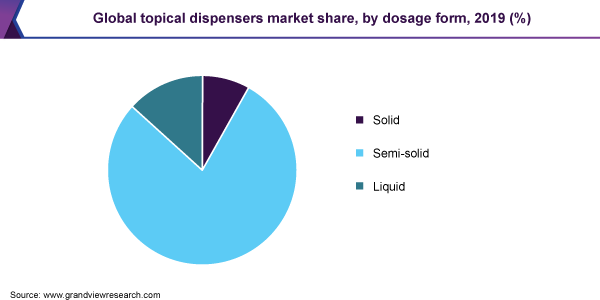Topical Dispensers Market Growth & Trends
The global topical dispensers market size is expected to reach USD 620.6 million by 2027, according to a new report by Grand View Research, Inc., expanding at a CAGR of 5.3% from 2020 to 2027. Rise in the prevalence of psoriasis and increasing incidence of skin disease are anticipated to propel the market growth.
Topical dispensers are used for topical application of gels, creams, foams, lotions, and ointments on skin. It ensures the touch free application of medication on skin. There are two types of topical dispensers: metered and swab type. Increasing prevalence of psoriasis is one of the major factors contributing to the growth of this market. Psoriasis is a chronic, painful, and non-communicable disease. It is most common in the geriatric population with age group 50–69. As per the National Psoriasis Foundation Report 2018, around 125 million people are suffering from psoriasis worldwide. This has increased the demand for topical dispensers in the industry.
North America dominated the global market, accounting for 31.4% share in 2019. Increasing adoption of topical dispensers and rising awareness are expected to drive the market in the region. In addition, increased technological development in the pharmaceutical sector and increasing cases of skin diseases in the region are anticipated to propel market growth in the region.

Request a free sample copy or view report summary:
Topical Dispensers Market Report
Topical Dispensers Market Report Highlights
- By type, the metered segment dominated the market with a share of 63.4% in 2019 due to increasing investment in R&D to develop more advanced products
- The metered type segment is also the fastest growing segment in the market due to recent technological development and increase in the demand for the metered topical dispensers
- The liquid dosage form segment in expected to expand at the highest CAGR of 5.6% from 2020 to 2027 due to rising awareness among the patients
- North America is the dominant and fastest growing regional market owing to increasing prevalence of psoriasis in the region.